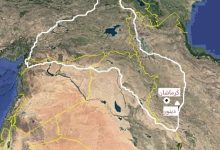Asia, the largest and most populous continent, is home to a diverse array of cultures, languages, and landscapes. As of the early 2020s, Asia’s population is estimated to be over 4.7 billion people, making up about 60% of the world’s total population. This immense demographic magnitude reflects not only the continent’s vast geographical size but also its role as a cradle of human civilization and a hub of modern economic development.
Historical Population Growth
The population of Asia has experienced dramatic growth over the centuries. Early historical records suggest that the continent was densely populated even in antiquity, with the civilizations of Mesopotamia, the Indus Valley, and ancient China contributing to significant early population centers. The Industrial Revolution and subsequent advancements in medicine and technology further accelerated population growth. In the 20th century, Asia’s population surged due to improved living conditions, medical care, and agricultural productivity.
Major Population Centers
Asia’s population is unevenly distributed across its vast territory. The continent encompasses a wide range of population densities, from the densely populated regions of East Asia and South Asia to the more sparsely inhabited areas of Central and Northern Asia.
East Asia: This region includes China, Japan, South Korea, and Taiwan. China, the most populous country in the world, has a population exceeding 1.4 billion people. Japan and South Korea also have high population densities, though Japan’s population growth has been relatively slow in recent decades due to low birth rates and an aging population.
South Asia: Home to India, Pakistan, Bangladesh, Nepal, Bhutan, and Sri Lanka, South Asia is another densely populated region. India, with a population of over 1.4 billion, is a major contributor to the continent’s overall population. The high population growth rates in India and Bangladesh significantly influence regional demographics.
Southeast Asia: This region includes countries such as Indonesia, the Philippines, Vietnam, Thailand, and Malaysia. Indonesia is the largest country in Southeast Asia by population, with more than 270 million people. The region is characterized by a mix of large urban centers and rural areas.
Central Asia: Comprising countries such as Kazakhstan, Uzbekistan, Turkmenistan, Kyrgyzstan, and Tajikistan, Central Asia is less densely populated compared to other regions. The vast steppes and desert landscapes contribute to lower population densities.
Western Asia: Also known as the Middle East, this region includes countries such as Saudi Arabia, Iran, Turkey, and the United Arab Emirates. Turkey and Iran are the most populous countries in this region, each with populations exceeding 80 million people.
Northern Asia: This region includes Siberia in Russia and parts of Mongolia. It is sparsely populated compared to other regions of Asia due to its harsh climate and remote geography.
Demographic Trends
Asia’s demographic trends are influenced by several factors including fertility rates, mortality rates, and migration patterns.
Fertility Rates: Fertility rates vary widely across Asia. In East Asia, countries like Japan and South Korea have very low fertility rates, leading to aging populations and potential future labor shortages. In contrast, South Asia has higher fertility rates, although they have been gradually decreasing due to family planning initiatives and urbanization.
Mortality Rates: Advances in healthcare and living standards have contributed to declining mortality rates across the continent. Improvements in medical technology, disease prevention, and nutrition have played significant roles in increasing life expectancy.
Migration: Internal migration, especially from rural to urban areas, is a notable trend in Asia. Major cities like Tokyo, Beijing, Mumbai, and Shanghai are experiencing rapid population growth due to migration from rural areas in search of better economic opportunities. Additionally, international migration, including labor migration and refugee movements, also affects demographic dynamics in various countries.
Economic and Social Implications
The immense population of Asia has significant economic and social implications. The continent’s large labor force contributes to its status as a global economic powerhouse, with countries like China and India emerging as major players in the global economy. Rapid urbanization and industrialization have spurred economic growth but also pose challenges related to infrastructure, environmental sustainability, and social inequality.
Socially, Asia’s large and diverse population contributes to a rich tapestry of cultures, languages, and traditions. However, it also presents challenges in terms of managing cultural diversity and addressing disparities between different regions and social groups.
Future Projections
Looking ahead, Asia’s population is expected to continue growing, although at a slower rate compared to the past. Projections indicate that the continent’s population will peak in the latter half of the 21st century. The demographic transition, characterized by declining fertility rates and an aging population in some regions, will likely shape future population trends.
Countries across Asia are implementing various policies to address these demographic changes, such as promoting higher birth rates in low-fertility countries, managing urbanization, and addressing the needs of an aging population. Additionally, ongoing developments in healthcare, technology, and education will play crucial roles in shaping the continent’s demographic landscape.
In conclusion, Asia’s population is a defining feature of the continent, influencing its economic, social, and cultural dynamics. With its vast and diverse population, Asia continues to be a central player in global affairs, shaping and being shaped by the demographic trends of the 21st century.




